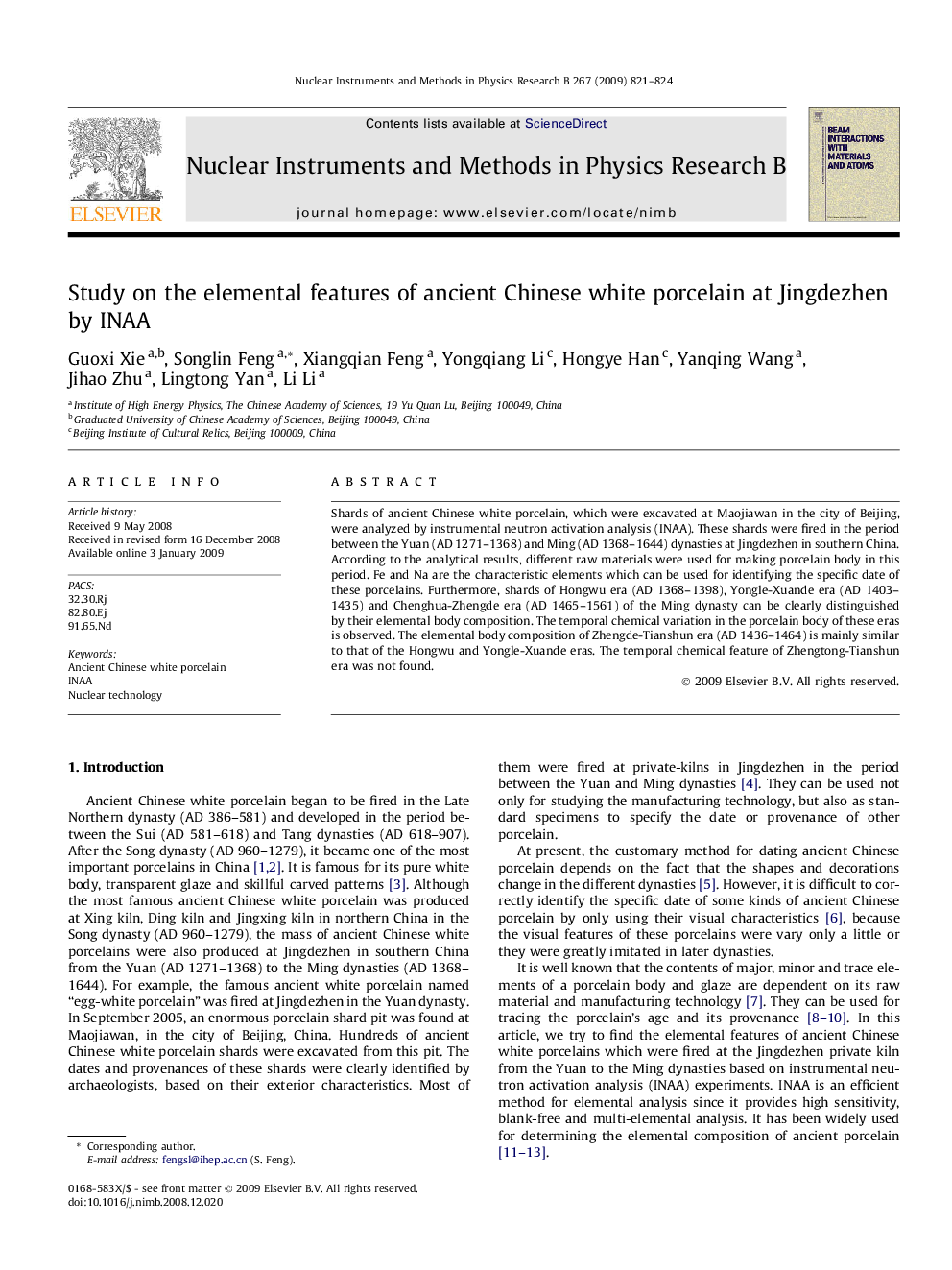| Article ID | Journal | Published Year | Pages | File Type |
|---|---|---|---|---|
| 1687387 | Nuclear Instruments and Methods in Physics Research Section B: Beam Interactions with Materials and Atoms | 2009 | 4 Pages |
Shards of ancient Chinese white porcelain, which were excavated at Maojiawan in the city of Beijing, were analyzed by instrumental neutron activation analysis (INAA). These shards were fired in the period between the Yuan (AD 1271–1368) and Ming (AD 1368–1644) dynasties at Jingdezhen in southern China. According to the analytical results, different raw materials were used for making porcelain body in this period. Fe and Na are the characteristic elements which can be used for identifying the specific date of these porcelains. Furthermore, shards of Hongwu era (AD 1368–1398), Yongle-Xuande era (AD 1403–1435) and Chenghua-Zhengde era (AD 1465–1561) of the Ming dynasty can be clearly distinguished by their elemental body composition. The temporal chemical variation in the porcelain body of these eras is observed. The elemental body composition of Zhengde-Tianshun era (AD 1436–1464) is mainly similar to that of the Hongwu and Yongle-Xuande eras. The temporal chemical feature of Zhengtong-Tianshun era was not found.
